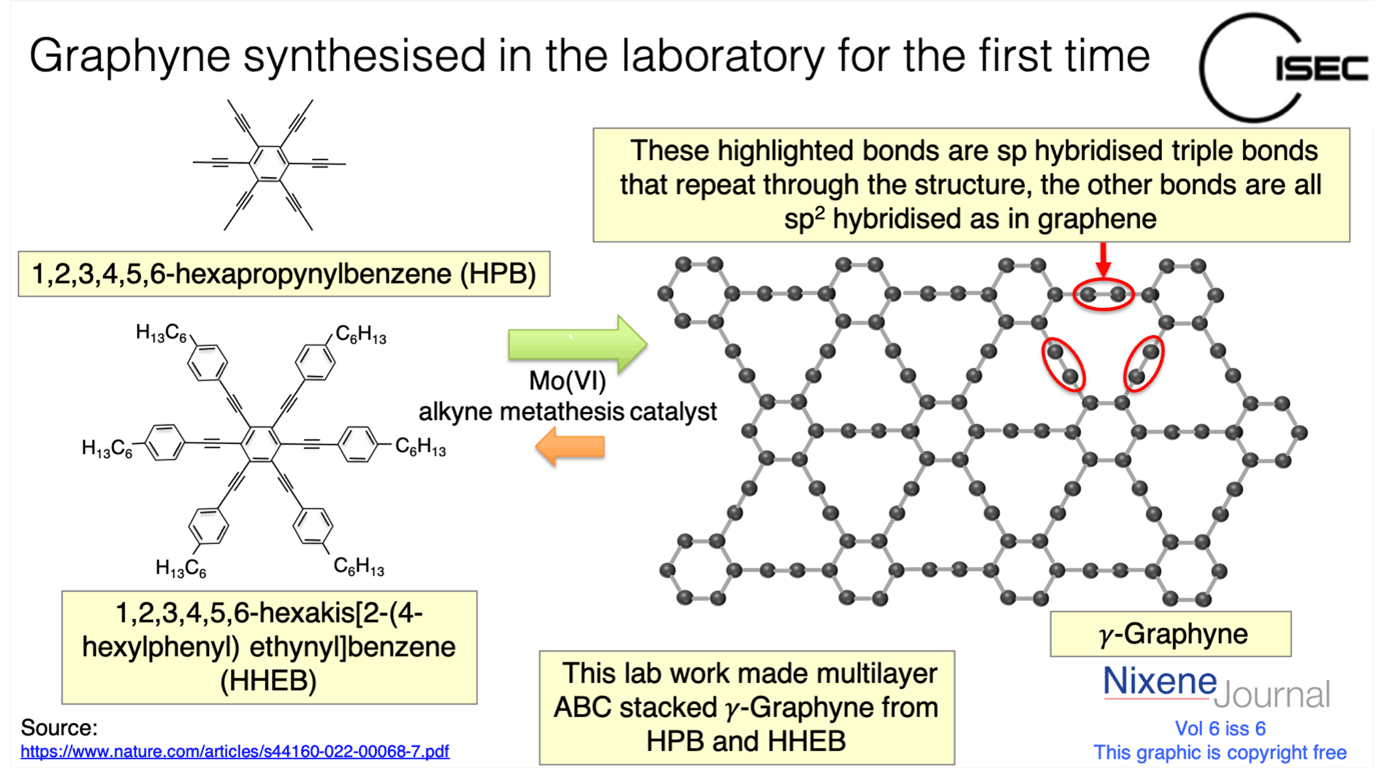International Space Elevator Consortium
July 2022 Newsletter
In this Issue:
President’s Corner
Tether Materials
ISDC Contest Results
History Corner
Upcoming Events
Contact Us/Support Us
President's Corner
by Pete Swan
Putting the Numbers together
As we are preparing for our virtual conference (19-20 Aug) and activities surrounding the International Astronautical Congress (18-22 Sept), I have come to realize the basic strength of Space Elevators has not been presented well. No one asks off planet advocates the really hard question “How much mass is required from Earth?” In our 2020 study report “Space Elevators are the Transportation Story of the 21st Century,” we laid out the movement of mass and our vision for commercial competitively developed space elevators. The general concept is two Space Elevators per Galactic Harbour with three of those spread around the world. The report laid out the numbers that have developed over the last 20 years—from Brad Edwards and early ISEC discussions of 20 tonne climbers with 14 tonne payloads (solidified in the IAA 2019 report) to the Obayashi design of 100 tonne climbers with 79 tonnes of payload on each. We have labeled the first as the Initial Operational Capability with the latter Full Operational Capability.
The recorded numbers are remarkable, developed across 20 years: 12 ISEC study reports, two IAA reports, and one Obayashi Corporation report with many many papers and presentations. When one does the math for 365 days of liftoffs and the transition from IOC to FOC across approximately ten years, the Space Elevator is the permanent infrastructure for space access that is required to meet our dreams of the future. Space Elevators are not only the Green Road to Space but the efficient approach to lift mass against the gravity well of Earth. When evaluating the history of mankind’s lift to space achievements, only 26,000 tonnes have been launched into orbit since 1957. When comparing the future early lift of six Space Elevators (IOC), the numbers burst out to say: We will transform how access to space is achieved. The numbers (to GEO and beyond) come out to be:
IOC 14x365x6 = 30,660 tonnes per year
FOC 79x365x6 = 173,010 tonnes per year
Even with reusability on all parts of a rocket, the rocket equation dominates the desire and only allows approximately 2% of the pad mass to GEO and only 0.5% to the surface of the Moon or Mars. This Space Elevator strength, of moving massive cargo, transforms space access and illustrates that the discussions should not principally be about cost to orbit, but about capacity to orbit to fulfill our dreams of the future. Mr. Musk wants 1,000,000 tonnes to Mars. Space Solar Power needs in excess of 2,000,000 tonnes to GEO. Each of these dreams are going forward, but lets think of the impact of the number of launches when you divide each required tonnage by 20 tonnes to GEO per launch (numbers vary, but not significantly). Yes, advanced rockets will become cheaper, more redundant, and more reliable, but they will not match the needs of the many for their dreams to move off planet or improve the human condition on Earth. The rocket equation is catastrophic while humanity needs a permanent infrastructure that is daily, inexpensive, environmentally friendly, safe, and routine.
Tether Materials
by Adrian Nixon, Board Member, ISEC
A New Two-dimensional Material: Graphyne
ISEC members are a smart bunch of people. You scan the literature and often spot interesting developments before I do. My thanks this time to Bert Molloy and Peter Robinson who made me aware that a new allotrope (a new molecular structure) of pure carbon has been made in the laboratory.
Researchers at the University of Colorado, Boulder, USA announced they have successfully made graphyne for the first time [1]. Graphyne is a two-dimensional (2D) material, similar to graphene. It can occur in several forms and its existence has been predicted for over a decade [2].
The team have made 𝛾-graphyne which is the most stable form and is a periodically sp–sp2-hybridized carbon allotrope [3]. The following graphic shows the structure.
Making graphyne is not easy. The team used a “wet chemistry” approach to make the new molecule from two precursor compounds 1,2,3,4,5,6-hexapropynylbenzene (HPB) and 1,2,3,4,5,6-hexakis [2-(4-hexylphenyl) ethynyl] benzene (HHEB). They used a molybdenum catalyst that enabled a reversible reaction called alkyne metathesis. The reaction was not symmetrically reversible and favoured the creation of graphyne.
The team reported they had made very small flakes of graphyne, around 10 µm2. These were enough to be examined and analysed. They found the flakes were made of multilayer 𝛾-graphyne and this was stacked in a repeating ABC sequence.
You will realise that the samples were not big enough to be placed in a tensile testing machine. However, we do know something about the tensile strength form molecular simulations. 𝛾-graphyne is anisotropic. This means its strength depends on whether it is subjected to tensile strength in the x direction or the y direction. Imagine holding a piece of paper in your hands and pulling it apart by holding the top and the bottom or holding it at the sides and you’ll get the idea.
In one direction the 𝛾-graphyne molecule is predicted to have a tensile strength of 48 GPa and in the other direction, a tensile strength of 107 GPa [2].
What all this means is that the synthesis of 𝛾-graphyne in the laboratory is an impressive achievement by the team at Boulder, Colorado. However, a wet chemistry approach is more likely to make the material in bulk in the powder form. If the material could be made as very large-scale continuous sheets, then we will have to be very careful how we deploy the material in practise because it has half the strength in one orientation than the other.
Our focus on the 2D material, graphene is still the right one from a practical engineering point of view.
My thanks again to the membership for spotting this development, I am sure you will find many more for me to evaluate as this whole field of 2D materials is moving so rapidly.
References:
1. Hu, Y., Wu, C., Pan, Q., Jin, Y., Lyu, R., Martinez, V., Huang, S., Wu, J., Wayment, L., Clark, N., Raschke, M., Zhao, Y. and Zhang, W., 2022. Synthesis of γ-graphyne using dynamic covalent chemistry. Nature Synthesis.
2. Cranford, S. and Buehler, M., 2011. Mechanical properties of graphyne. Carbon, 49(13), pp.4111-4121.
3. The terms sp and sp2 refer to the bond hybridisation in the molecule.
sp refers to a triple bond where the bond angle is 180° so the structure is linear
sp2 to double bonding where the bond angle is 120° so the structure is trigonal planar
ISDC Contest Results
St Flannan’s Wins with Space Elevators
International Space Development Conference’s involvement with students is remarkable. The yearly NSS Space Settlement Contest supports students from around the world (this year 17,000 students competed from 22 countries) designing their own space settlements. This year, the grand prize winner was from Ireland and featured a space elevator on Ceres dwarf planet. As ISEC has been supporting the St Flannan’s competitors over the last several years (as they presented inside our Space Elevator track), we felt energized that they were coming back in 2022 as the Grand Prize winner. The following words were from a local newsletter in April.
“THE St Flannan's College Space Settlement Design team are over the moon having once again proven themselves to be out of this world in an international NASA competition. The team, made up of five students, have been awarded the highest honour in the NASA Ames Space Settlement Contest beating thousands of entries from around the world.
Fifth year students: Adam Downes, Cian Pyne, Naem Hag, Jack O’Connor and Garbhan Monahan now have the opportunity to present their idea at the International Space Development Conference in Washington next month. Atter more than a decade of wining major awards in the most senior category of the prestigious international contest they have built on their previous successes and been awarded the much-coveted Grand Prize. Their project was judged to be the overall winner from a field of 17,000 participating students who submitted over 3,000 entries.”1
We have supported them (slightly) with Space Elevator concepts; and, they have used the knowledge effectively. The design they won with this year included an active space elevator moving product off a dwarf planet on the way to their settlement. Their use of Space Elevators as simple transportation infrastructures is right in line with our thinking about their transformational characteristics. It was fun to talk to them on the awards night and feel the excitement as they presented their off-world ideas to the community of off-planet movement. They did exceptionally well in their presentation and mingled beautifully with the experts.
Editor's Note: The caption reads: Naem Hag, Garbhan Monahan, Adam Downes, Cian Pyne and Jack O’Connor, members of the St Flannan's College Space Settlement Design Team, who are off to Washington at the end of May with their Mag Mell project. Photograph by John Kelly
[1] Jessica Quinn, “St Flannan’s project is out of this world,” The Clare Champion, April 8, 2022.
History Corner
by David Raitt
Space Elevator Book Covers
For this month’s History Corner I thought I would give a selection of book (and a couple of magazine) covers (plus a poster) that feature a space elevator on the ribbon fairly prominently. There are actually quite a few books with the words space elevator in their titles but often the cover is simply some kind of futuristic spacecraft without either a tether or the Earth or similar below. For some titles, there are several different covers - obviously produced for different editions and by different publishers. I thought of including the various ISEC study reports which have a space elevator on the cover - but these are easy to look at on the ISEC Studies page. I have not given details of the books illustrated here because the authors and titles are prominent and interested readers can look them up for themselves!
Upcoming Events
Virtual Space Elevator Conference
Sponsored by the International Space Elevator Consortium
https://www.isec.org/events
Topics: Transformational Permanent Space Infrastructure; Tether/Climber interface & Dual Space Access Architecture
Friday, August 19th through Saturday, August 20th, 2022
Registration: TBD
73rd International Astronautical Congress
Sponsored by the International Astronautical Federation (IAF)
https://www.iafastro.org/events/iac/iac-2022/
Sunday, September 18th through Thursday, September 22nd, 2022
Paris, France
The Space Elevator session takes place Monday, September 19th from 3:00 PM until 5:30 PM local time. It will be Session 3 “Modern Day Space Elevators Entering Development” of the 20th IAA Symposium on Visions and Strategies for the Future.
Contact Us:
You can find us on Facebook, Twitter, Flickr, LinkedIn, Instagram, and YouTube.
Our website is www.isec.org.
Support us:
Sign up to be a member at: https://www.isec.org/membership
You could volunteer to assist with any number of activities...let us know where you would like to help!
You can also give directly using the “Donate” link at the bottom of our website page.
Our unique charity link for Amazon Smile is https://smile.amazon.com/ch/80-0302896.
Does your place of employment do matching funds for donations or volunteer time through Benevity? If so, you can make ISEC your recipient. Our 501(c)(3) number is 80-0302896.

































